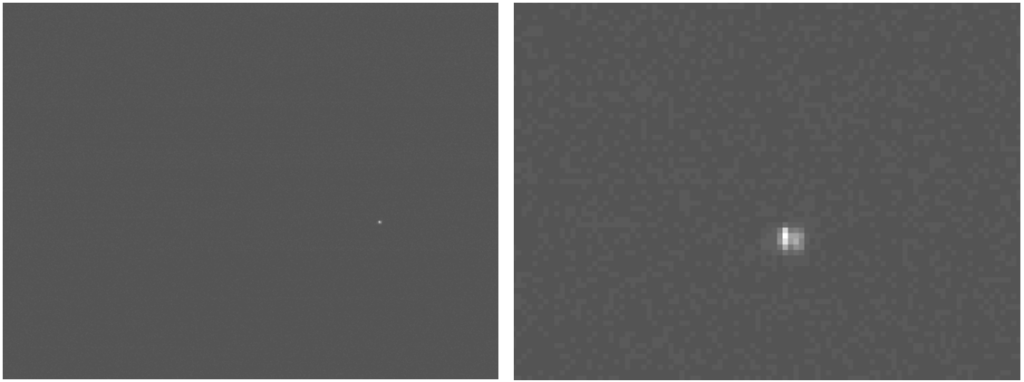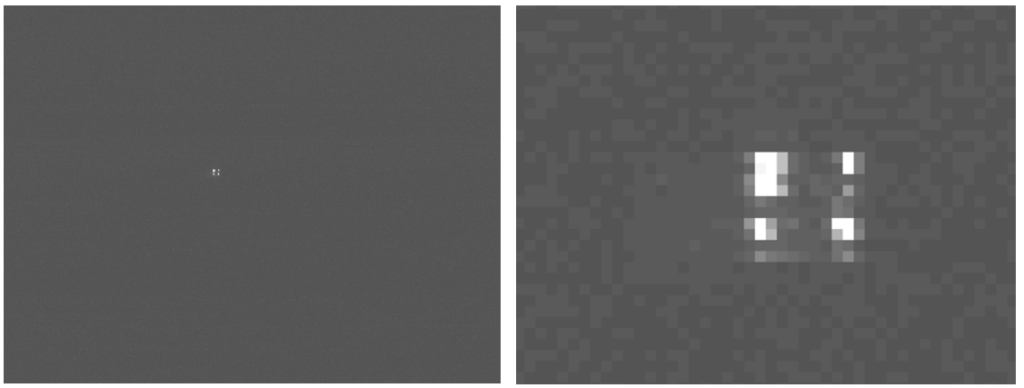A major milestone for the Proba-3 mission! For the first time ever, the Coronagraph Spacecraft (CSC) has been imaged by the Occulter Spacecraft (OSC), another an exciting step toward precision formation flying.
The images were captured using the Visual Based System (VBS), a key component for the mission’s operations. The VBS consists of two cameras: the Wide Angle Camera (WAC) and the Narrow Angle Camera (NAC). Both will play a crucial role during coronagraphy, helping the spacecraft maintain precise alignment to block out the Sun and observe the solar corona.
During the first imaging attempt, the two spacecraft were approximately 4.5 km apart. To achieve synchronization, the CSC used a series of blinking LEDs, which had to be adjusted for brightness due to the high distance between the spacecraft. The WAC was the first to lock onto the CSC, after which the team skillfully fine-tuned the pointing offsets to bring the CSC into view with the NAC as well. The result? The first-ever picture of the CSC taken by the OSC!

A few hours later, the team successfully captured a second image, this time at a closer distance of 1.2 km. In this image, the blinking LEDs on the CSC are clearly visible — and with a bit of imagination, you might even spot the solar panel! For the sharp-eyed observers out there: don’t worry, the CSC is not upside down — this is simply due to the image inversion performed by the camera.

These images bring Proba-3 one step closer to their goal. As we continue testing and refining our systems, we are advancing towards demonstrating millimetre-scale formation-flying, more and more every day.

Discussion: no comments